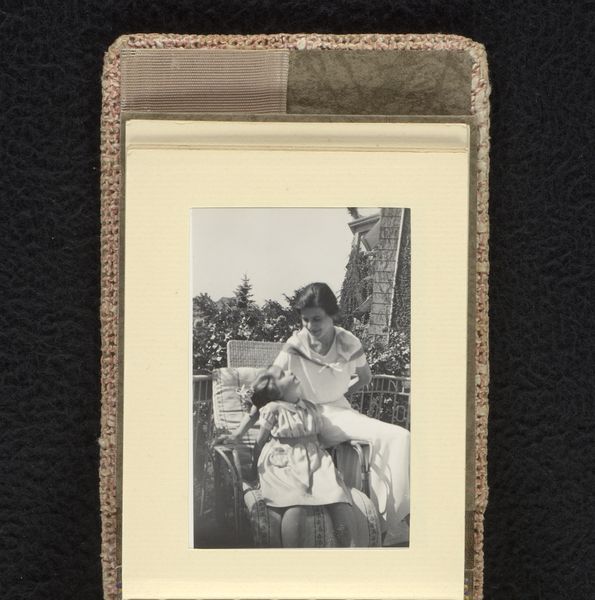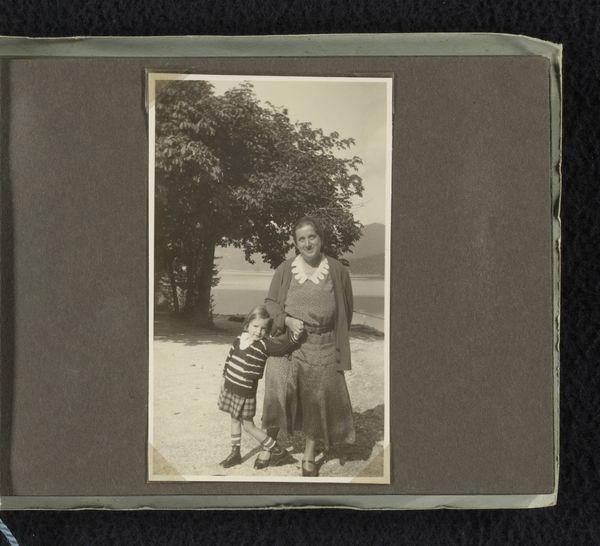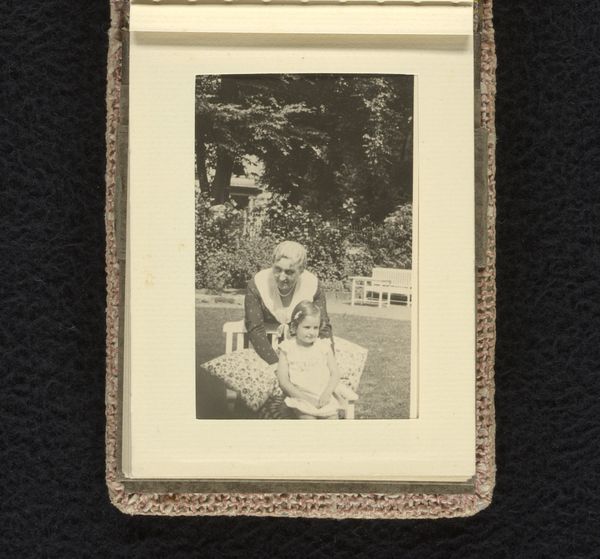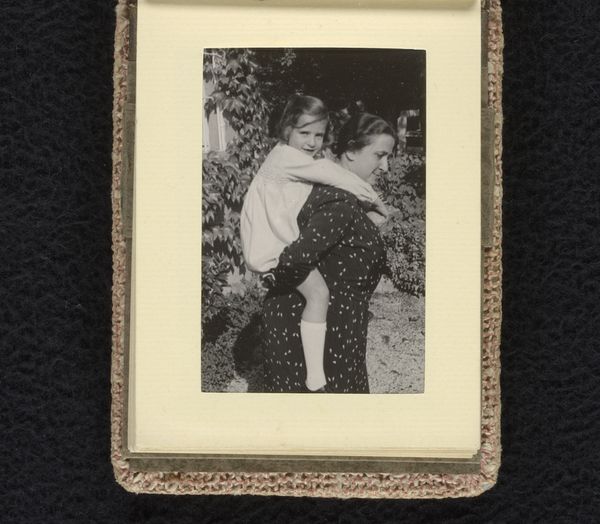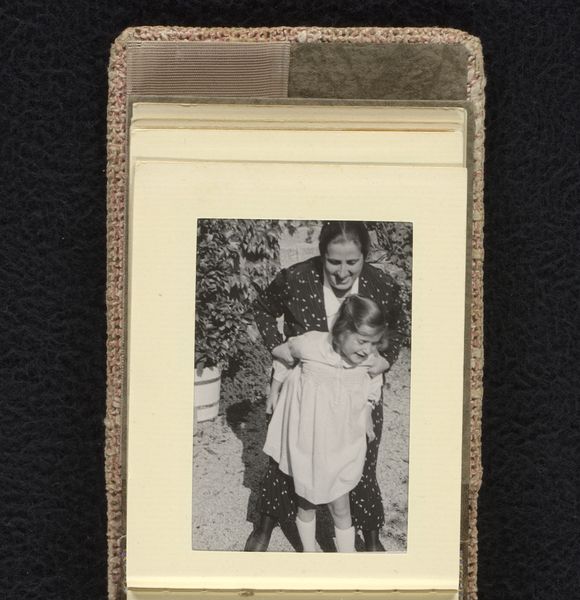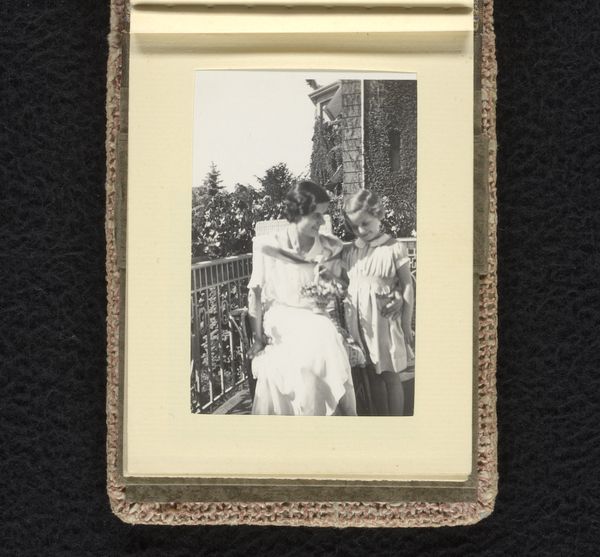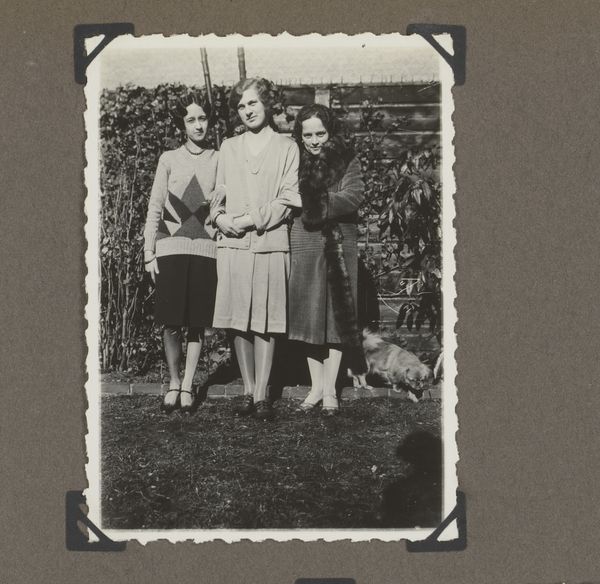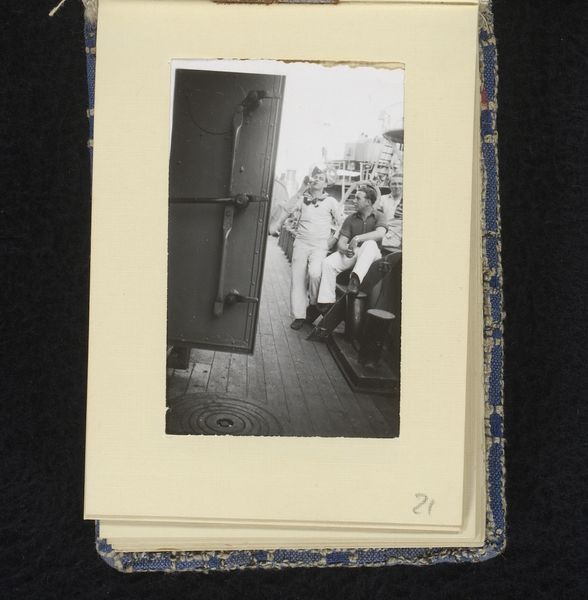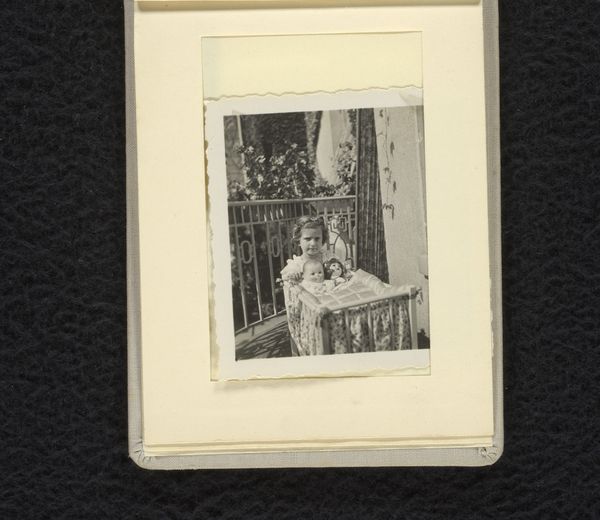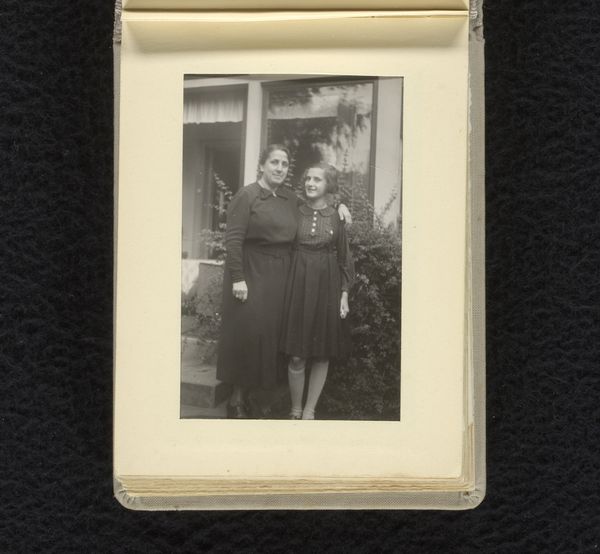
Isabel Wachenheimer op het balkon met twee onbekende vrouwen, juni-september 1933, Hamburg Possibly 1933 - 1936
0:00
0:00
photography
#
portrait
#
photography
#
realism
Dimensions: height 65 mm, width 92 mm, height 80 mm, width 106 mm
Copyright: Rijks Museum: Open Domain
Editor: Here we have a photograph titled "Isabel Wachenheimer op het balkon met twee onbekende vrouwen, juni-september 1933, Hamburg," likely created between 1933 and 1936. It is a black and white photographic portrait and there's something so immediate about it. What do you see in this image? Curator: Note the composition. The subjects are positioned in a distinct hierarchy of height and placement. The textures created through light and shadow give form to each individual. Do you observe how the linear patterns on the women’s clothing and the child's romper disrupt the eye's natural desire to travel fluidly throughout the scene? The subtle details hold power. Editor: I see that the linear details contrast against the background greenery and wrought iron. How does that formal arrangement contribute to the work as a whole? Curator: The linear structure juxtaposed against the amorphous natural background and curvilinear lines on the clothing creates tension, thus establishing an interplay between nature and societal design that creates formal disharmony and visual complexity. Note too how the photographer uses shadow. Are they soft or hard edged? This will determine the emotive power of the photograph. Editor: Yes, the shadows are quite sharp, particularly defining the edges of the building and the ironwork. The way that each shape is very specifically defined gives me the impression of a fleeting moment made timeless. Curator: Exactly. These subtle formal elements are tools by which we may understand more fully the photograph's complex power as an artistic document. Editor: This perspective has illuminated for me the level of artistry that may exist in a photographic portrait. Curator: Likewise, such images open to discourse questions about intention, and this has enriched my experience too.
Comments
No comments
Be the first to comment and join the conversation on the ultimate creative platform.
